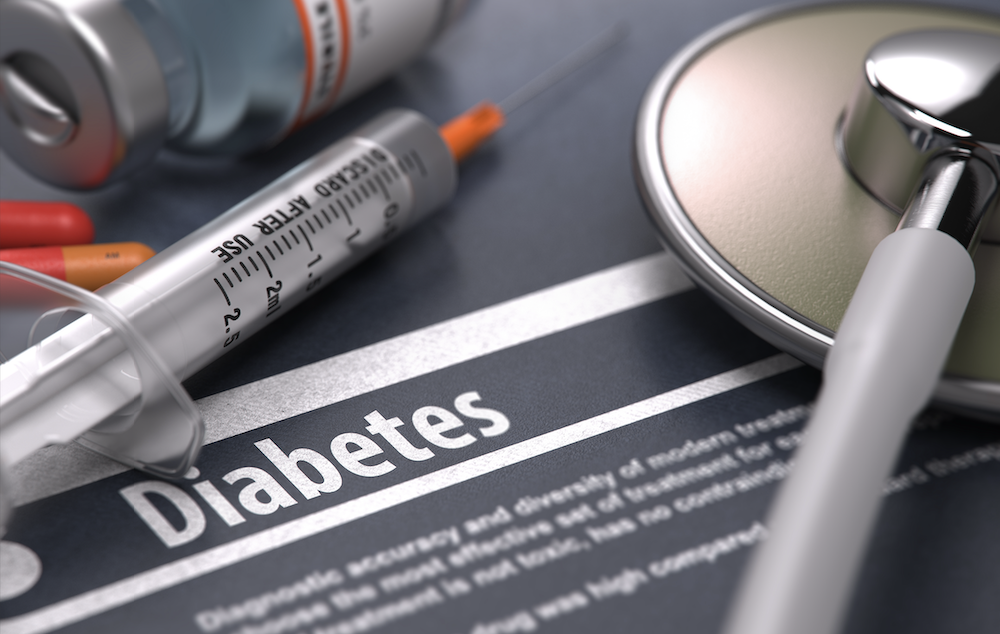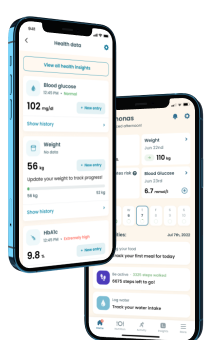8 Early Signs of Type 2 Diabetes

Often, type 2 diabetes is diagnosed incidentally during a routine blood test. Diabetes creeps up slowly, often with no signs and symptoms. Some of the early signs of this disease may be associated with other causes. Are you aware of these eight type 2 diabetes signs?
Widespread issue
The figures put out by CDC show that 34.2 million people in the US have diabetes. Of these, 90-95% suffer from type 2 diabetes. While this indicates that 1 in 10 people have the disease, 7.3 million people do not know about it. Are you one of them?
Why getting diagnosed is essential? If you have prediabetes and take care of your health, you may be able to avoid getting full-blown diabetes. If you have type 2, you can better manage your care and avoid the many health complications of diabetes.
What are the symptoms of diabetes?
Early signs of type 2 diabetes are many, but you may not be aware of them. Unfortunately, as sugar levels shoot up, the disease often causes irreversible damage to the body in different ways. That is why you must monitor your health regularly and go for routine health check-ups.
A family history of diabetes puts you at greater risk of developing the disease, as does obesity, poor eating habits, sedentary lifestyle, and age.
If you suffer from one or more (or all) of these, get your blood sugar tested.
- Needing to urinate very often – as the blood sugar levels are higher than average, the kidneys try to expel the excess sugar by removing all liquid from your body, so you need to pee constantly.
- Increased thirst – this results in your feeling thirsty. You might have a dry mouth, so you drink more water.
- Feeling very hungry, even if you have eaten recently – this occurs because your cells cannot use the nutrition available, thanks to reduced insulin levels in the body.
- Inexplicable weight loss – as you pee a lot, you lose the calories in the form of sugar. You will lose weight even if you are eating normally.
- Fatigue or being more tired than warranted – you cannot use the energy that the food is supposed to give you. Plus, you get dehydrated from frequent urination. It results in reduced energy levels and fatigue.
- Blurred vision or poor eyesight – when your body’s sugar levels are high, it causes you to have reduced mental focus and causes vision problems.
- Nerve pain or tingling in the hands and feet – high sugar levels in the blood can cause nerve damage resulting in pain and tingling in the extremities. It can also cause headaches.
- Sores or wounds that take longer to heal – again, high sugar levels reduce your body’s ability to heal wounds and cuts.
While these are some of the early signs of type 2 diabetes, there are other indicators of high and low blood sugar levels. You should be alert for these indications of diabetic hypoglycemia or low blood sugar. Hypoglycemia is caused by excess medication, insufficient food intake, delayed meals, or other reasons.
The symptoms include:
- Shakiness
- Dizziness
- Breaking out in a sweat
- Hunger
- Palpitations or an increased heartbeat
- Vision disturbances
- Confusion
- Moodiness or irritability
- Nervousness or anxiety
When you know what to look out for, you are more likely to take the right course of action to manage your diabetes.
How is type 2 diabetes diagnosed?
When you visit your doctor for any medical care or even for a routine check-up, a blood test can reveal whether your sugar levels are high. The test involves a simple finger prick, and the result is in less than a minute. In a laboratory setting, the blood will be taken from a vein.
Random Blood Sugar Test
It does not matter when you visit your doctor, whether you have eaten or you are fasting or have eaten a long time ago. This blood test is Random Blood Sugar. The warning is that sugar levels of 200 mg/dL or higher indicate diabetes. You may have prediabetes if the levels are between 140 and 199 mg/dL. In either case, the doctor may order more tests.



Fasting Plasma Glucose Test
A more definitive test is the Fasting Blood Sugar, also called the Fasting Plasma Glucose Test. The blood for this is drawn out from a vein in a laboratory. As the name of the test shows, it is done only after fasting. You must not eat any food or liquids except for plain water for 8-12 hours before the test, only having a little water if necessary.
If you have prediabetes, your doctor will recommend some lifestyle and diet changes. If you have type 2 diabetes, your doctor will also recommend lifestyle changes and might also prescribe medication.
Oral Glucose Tolerance Test (OGTT)
This is a test that measures your body’s ability to use glucose. It is regarded as the gold standard for a diabetes diagnosis, even if. For this test, you must fast for 8-12 hours. Then you go to the laboratory, and your blood is drawn for the Fasting Blood Glucose test. This acts as a baseline.
After that, you are given 75 grams or 2.6 ounces of sugar in 237 ml or 8 ounces of water to drink. You have to wait for 2 hours as the body uses the sugar, and then the blood is drawn again.
The second test’s sugar levels indicate if you have normal levels, have diabetes, or prediabetes.
- A reading of 100 mg/dL indicates that your sugar levels are normal.
- A reading of between 100 and 125 mg/dL shows that you have prediabetes.
- After two tests, a reading of 126 mg/dL or more shows that you have diabetes.
HBA1C Test
Also called the glycated hemoglobin test, this one measures the average blood sugar levels in your body for the past three months. It works by measuring the percentage of red blood cells that are coated with sugar. High levels of this indicate that you have diabetes or prediabetes.
- A reading of 5.7% shows that your sugar levels are normal.
- A reading of between 5.7% and 6.4% shows that you have prediabetes.
- A reading of 6.5% or above is indicative of diabetes.
If you have any abnormal readings that confirm you have diabetes, follow your doctor’s instructions regarding medication, diet control, and exercise.
How do you know it is a medical emergency?
Sometimes, despite your best efforts, you may find yourself caught unaware. However, if you feel too weak or faint or even lose consciousness, you need immediate medical attention. It may happen if your blood sugar levels go too high or too low.
Do keep your family, friends, and colleagues aware that you are dealing with diabetes, and they can get you medical care if you become unconscious. If you are in a state to do so, do talk to your doctor, visit the emergency room at the nearest hospital or call 911.
And if you have type 2 diabetes, consult your doctor before changing any medications, taking any supplements, or embarking on any new physical activity.
Key takeaways:
- Know what the early signs of type 2 diabetes are – when you are aware of the signs and symptoms, you are more likely to take the correct action and visit a doctor.
- Get the blood tests done as per medical guidance for diagnosis – you must get a diagnosis and start treatment to prevent any long-term damage to your health.
- Take your prescribed medicines regularly and monitor your blood sugar levels at home – always make sure that you carry some medicines with you.
Take a quiz and get your diabetes-management plan today!









